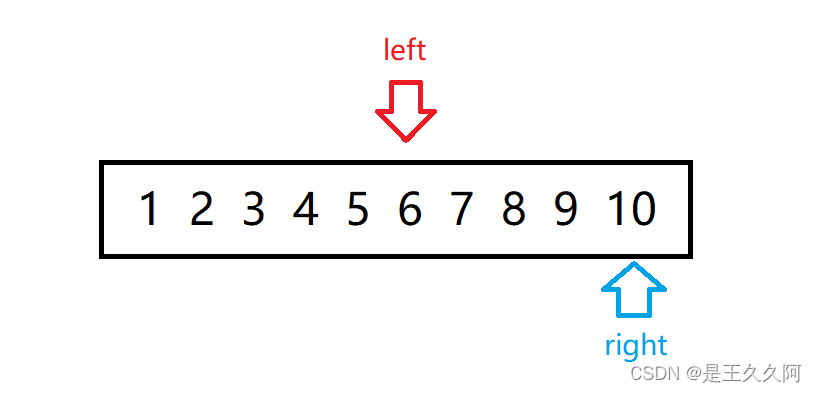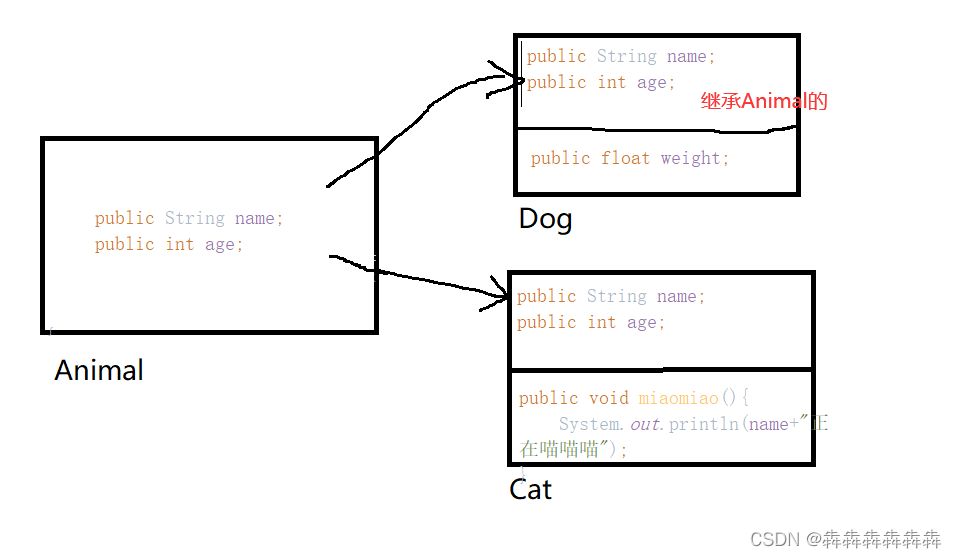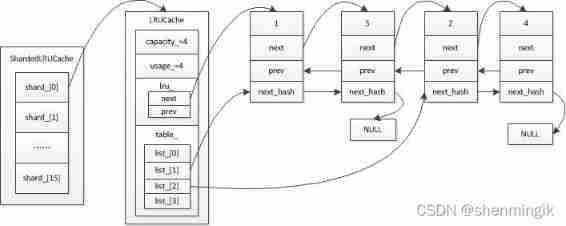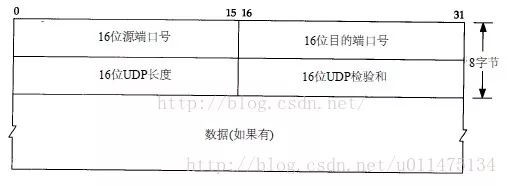当前位置:网站首页>[the Nine Yang Manual] 2017 Fudan University Applied Statistics real problem + analysis
[the Nine Yang Manual] 2017 Fudan University Applied Statistics real problem + analysis
2022-07-06 13:30:00 【Elder martial brother statistics】
Catalog
The real part
One 、(30 branch ) A term is used to explain
(1)(5 branch ) Sample mean 、 Sample variance ;
(2)(5 branch ) statistic ;
(3)(5 branch ) Order statistics ;
(4)(5 branch ) Median 、 Sample median ;
(5)(5 branch ) Empirical distribution function ;
(6)(5 branch ) Unbiased estimate .
Two 、(20 branch ) X 1 , X 2 , X_{1}, X_{2}, X1,X2, i.i.d ∼ Exp ( 1 ) , \sim \operatorname{Exp}(1), ∼Exp(1), seek
(1)(10 branch ) X 1 X 1 + X 2 \frac{X_{1}}{X_{1}+X_{2}} X1+X2X1 Density function of ;
(2)(10 branch ) X ( 2 ) − X ( 1 ) X_{(2)}-X_{(1)} X(2)−X(1) Density function of .
3、 ... and 、(20 branch ) X 1 , X 2 X_{1}, X_{2} X1,X2 i.i.d. ∼ N ( 0 , 1 ) , \sim N(0,1), ∼N(0,1), seek X 1 X 2 \frac{X_{1}}{X_{2}} X2X1 Probability distribution of .
Four 、(20 branch ) X 1 , X 2 , … , X n X_{1}, X_{2}, \ldots, X_{n} X1,X2,…,Xn i.i.d. ∼ F ( x ) , \sim F(x), ∼F(x), remember Y n ( x ) = ∑ i = 1 n I [ X i ≤ x ] , Y_{n}(x)=\sum_{i=1}^{n} I\left[X_{i} \leq x\right], Yn(x)=∑i=1nI[Xi≤x], seek lim n → ∞ Y n ( x ) n \lim _{n \rightarrow \infty} \frac{Y_{n}(x)}{n} limn→∞nYn(x).
5、 ... and 、(20 branch ) X 0 , X 1 , ⋯ , X 2 n , X_{0}, X_{1}, \cdots, X_{2 n}, X0,X1,⋯,X2n, i.i.d ∼ U ( 0 , 1 ) , X ( 0 ) , X ( 1 ) , ⋯ , X ( 2 n ) \sim U(0,1), \quad X_{(0)}, X_{(1)}, \cdots, X_{(2 n)} ∼U(0,1),X(0),X(1),⋯,X(2n) Is the corresponding order statistic , Try to prove X ( n ) → P 1 2 X_{(n)} \stackrel{P}{\rightarrow} \frac{1}{2} X(n)→P21.
6、 ... and 、(20 branch ) Continuous random variables are known X X X The expectations of the E X E X EX There is , f ( t ) = E ∣ X − t ∣ f(t)=E|X-t| f(t)=E∣X−t∣ stay t = m t=m t=m Take the minimum value , prove P ( X ≤ m ) = 1 2 P(X \leq m)=\frac{1}{2} P(X≤m)=21.
7、 ... and 、(20 branch ) X 1 , X 2 , X 3 X_{1}, X_{2}, X_{3} X1,X2,X3 i.i.d ∼ N ( 0 , 1 ) , \sim N(0,1), ∼N(0,1), seek
(1)(10 branch ) P ( X 1 > X 2 > X 3 ) P\left(X_{1}>X_{2}>X_{3}\right) P(X1>X2>X3);
(2)(10 branch ) P ( X 1 > X 2 , X 1 > X 3 ) P\left(X_{1}>X_{2}, X_{1}>X_{3}\right) P(X1>X2,X1>X3).
The analysis part
One 、(30 branch ) A term is used to explain
(1)(5 branch ) Sample mean 、 Sample variance ;
(2)(5 branch ) statistic ;
(3)(5 branch ) Order statistics ;
(4)(5 branch ) Median 、 Sample median ;
(5)(5 branch ) Empirical distribution function ;
(6)(5 branch ) Unbiased estimate .
Solution: (1) The sample mean is taken from a specific population n n n Independent random samples , Calculated average , Write it down as X ˉ = 1 n ∑ i = 1 n X i \bar{X}=\frac{1}{n} \sum_{i=1}^{n} X_{i} Xˉ=n1∑i=1nXi, If the overall expectation exists , be X ˉ \bar{X} Xˉ It is a strong consistent estimate of the overall expectation . The sample variance is based on this n n n The square of the corrected mean deviation calculated from independent random samples , Correction means that the average is divided by its degrees of freedom n − 1 n-1 n−1 Not the number of data n n n, The sample variance is generally recorded as S 2 = 1 n − 1 ∑ i = 1 n ( X i − X ˉ ) 2 S^{2}=\frac{1}{n-1} \sum_{i=1}^{n}\left(X_{i}-\bar{X}\right)^{2} S2=n−11∑i=1n(Xi−Xˉ)2, If the variance of the population exists , be S 2 S^{2} S2 It is also a strong consistent estimate of the population variance .
(2) A statistic is a function whose expression contains only samples but no unknown parameters , It is essentially a random variable ( vector ), Of course, when the value of random samples is given , Statistics can also be regarded as a known constant ( Constant vector ), At this time, the statistic is “ Observations of Statistics ” For short .
(3) Order statistics refers to random samples X 1 , X 2 , … , X n X_{1}, X_{2}, \ldots, X_{n} X1,X2,…,Xn Rearrange the statistics from small to large , Generally, it is written from small to large X ( 1 ) , X ( 2 ) , … , X ( n ) X_{(1)}, X_{(2)}, \ldots, X_{(n)} X(1),X(2),…,X(n).
(4) If x 0.5 x_{0.5} x0.5 Satisfy P { X ≤ x 0.5 } = 0.5 P\left\{X \leq x_{0.5}\right\}=0.5 P{ X≤x0.5}=0.5 said x 0.5 x_{0.5} x0.5 Is the median . And the median of the sample m 0.5 m_{0.5} m0.5 It refers to the number in the middle of the random sample , If expressed in order statistics, it is m 0.5 = { x ( n + 1 2 ) , n = Odd number , x ( n 2 ) + x ( n 2 + 1 ) 2 , n = even numbers . m_{0.5}= \begin{cases}x_{\left(\frac{n+1}{2}\right)}, & n=\text { Odd number , } \\ \frac{x_{\left(\frac{n}{2}\right)}+x_{\left(\frac{n}{2}+1\right)}}{2}, & n=\text { even numbers . }\end{cases} m0.5=⎩⎨⎧x(2n+1),2x(2n)+x(2n+1),n= Odd number , n= even numbers .
(5) Empirical distribution function is an estimate of the overall distribution function based on sample information , Write it down as F n ( x ) = 1 n ∑ i = 1 n I [ X i ≤ x ] , F_{n}(x)=\frac{1}{n} \sum_{i=1}^{n} I\left[X_{i} \leq x\right], Fn(x)=n1i=1∑nI[Xi≤x], according to Glivenko-Cantelli Theorem , The empirical distribution function is a uniformly strong consistent estimate of the population distribution function , namely sup x ∣ F n ( x ) − F ( x ) ∣ * a . s . 0. \sup _{x}\left|F_{n}(x)-F(x)\right| \stackrel{a . s .}{\longrightarrow} 0 . xsup∣Fn(x)−F(x)∣*a.s.0. (6) If g ^ ( X 1 , … , X n ) \hat{g}\left(X_{1}, \ldots, X_{n}\right) g^(X1,…,Xn) Satisfy E g ^ ( X 1 , … , X n ) = g ( θ ) E \hat{g}\left(X_{1}, \ldots, X_{n}\right)=g(\theta) Eg^(X1,…,Xn)=g(θ), said g ^ \hat{g} g^ yes g g g Unbiased estimation of , Unbiasedness is a A very important good standard , But it's not necessary , As if E X E X EX There is , A random sample X 1 X_{1} X1 Always an unbiased estimate of overall expectations , But you can hardly say that it is a good estimate .
Two 、(20 branch ) X 1 , X 2 , X_{1}, X_{2}, X1,X2, i.i.d ∼ Exp ( 1 ) , \sim \operatorname{Exp}(1), ∼Exp(1), seek
(1)(10 branch ) X 1 X 1 + X 2 \frac{X_{1}}{X_{1}+X_{2}} X1+X2X1 Density function of ;
(2)(10 branch ) X ( 2 ) − X ( 1 ) X_{(2)}-X_{(1)} X(2)−X(1) Density function of .
Solution: (1) According to the meaning , 2 X 1 ∼ χ 2 ( 2 ) , 2 X 2 ∼ χ 2 ( 2 ) 2 X_{1} \sim \chi^{2}(2), 2 X_{2} \sim \chi^{2}(2) 2X1∼χ2(2),2X2∼χ2(2) And independent of each other , so X 1 X 1 + X 2 = 2 X 1 2 X 1 + 2 X 2 ∼ Beta ( 1 , 1 ) \frac{X_{1}}{X_{1}+X_{2}}=\frac{2 X_{1}}{2 X_{1}+2 X_{2}} \sim \operatorname{Beta}(1,1) X1+X2X1=2X1+2X22X1∼Beta(1,1), The density function is f ( x ) = 1 , 0 < x < 1 f(x)=1,0<x<1 f(x)=1,0<x<1, namely U ( 0 , 1 ) U(0,1) U(0,1).
(2) It's easy to see X ( 2 ) − X ( 1 ) = ∣ X 1 − X 2 ∣ X_{(2)}-X_{(1)}=\left|X_{1}-X_{2}\right| X(2)−X(1)=∣X1−X2∣, According to the convolution formula Y = X 1 − X 2 Y=X_{1}-X_{2} Y=X1−X2 The density function of is f ( y ) = { 1 2 e − y , y ≥ 0 1 2 e y , y < 0 f(y)= \begin{cases}\frac{1}{2} e^{-y}, & y \geq 0 \\ \frac{1}{2} e^{y}, & y<0\end{cases} f(y)={ 21e−y,21ey,y≥0y<0 so ∣ Y ∣ |Y| ∣Y∣ The density function of is f ( x ) = e − y , y ≥ 0 f(x)=e^{-y}, y \geq 0 f(x)=e−y,y≥0.
[ notes ] if X ∼ χ 2 ( m ) , Y ∼ χ 2 ( n ) X \sim \chi^{2}(m), Y \sim \chi^{2}(n) X∼χ2(m),Y∼χ2(n), And independent of each other , be X X + Y ∼ Beta ( m 2 , n 2 ) . \frac{X}{X+Y} \sim \operatorname{Beta}\left(\frac{m}{2}, \frac{n}{2}\right). X+YX∼Beta(2m,2n). The analysis is as follows : remember U = X X + Y , V = X + Y U=\frac{X}{X+Y}, V=X+Y U=X+YX,V=X+Y, After inverse solution x = u v , y = v − u v x=u v, y=v-u v x=uv,y=v−uv, ∣ J ∣ = ∣ ∂ ( x , y ) ∂ ( u , v ) ∣ = ∣ v u − v 1 − u ∣ = v , |J|=\left|\frac{\partial(x, y)}{\partial(u, v)}\right|=\left|\begin{array}{cc} v & u \\ -v & 1-u \end{array}\right|=v, ∣J∣=∣∣∣∣∂(u,v)∂(x,y)∣∣∣∣=∣∣∣∣v−vu1−u∣∣∣∣=v, therefore f U , V ( u , v ) = v f X , Y ( u v , ( 1 − u ) v ) = u m 2 − 1 ( 1 − u ) n 2 − 1 Γ ( m 2 ) Γ ( n 2 ) ⋅ ( 1 2 ) m + n 2 v m + n 2 − 1 e − v 2 f_{U, V}(u, v)=v f_{X, Y}(u v,(1-u) v)=\frac{u^{\frac{m}{2}-1}(1-u)^{\frac{n}{2}-1}}{\Gamma\left(\frac{m}{2}\right) \Gamma\left(\frac{n}{2}\right)} \cdot\left(\frac{1}{2}\right)^{\frac{m+n}{2}} v^{\frac{m+n}{2}-1} e^{-\frac{v}{2}} fU,V(u,v)=vfX,Y(uv,(1−u)v)=Γ(2m)Γ(2n)u2m−1(1−u)2n−1⋅(21)2m+nv2m+n−1e−2v, so f U ( u ) = ∫ 0 + ∞ f U , V ( u , v ) d v = Γ ( m + n 2 ) Γ ( m 2 ) Γ ( n 2 ) u m 2 − 1 ( 1 − u ) n 2 − 1 ∼ Beta ( m 2 , n 2 ) . f_{U}(u)=\int_{0}^{+\infty} f_{U, V}(u, v) d v=\frac{\Gamma\left(\frac{m+n}{2}\right)}{\Gamma\left(\frac{m}{2}\right) \Gamma\left(\frac{n}{2}\right)} u^{\frac{m}{2}-1}(1-u)^{\frac{n}{2}-1} \sim \operatorname{Beta}\left(\frac{m}{2}, \frac{n}{2}\right). fU(u)=∫0+∞fU,V(u,v)dv=Γ(2m)Γ(2n)Γ(2m+n)u2m−1(1−u)2n−1∼Beta(2m,2n).
3、 ... and 、(20 branch ) X 1 , X 2 X_{1}, X_{2} X1,X2 i.i.d ∼ N ( 0 , 1 ) , \sim N(0,1), ∼N(0,1), seek X 1 X 2 \frac{X_{1}}{X_{2}} X2X1 Probability distribution of .
Solution: Due to denominator X 2 X_{2} X2 The distribution of is about 0 symmetry , therefore X 1 ∣ X 2 ∣ \frac{X_{1}}{\left|X_{2}\right|} ∣X2∣X1 And X 1 X 2 \frac{X_{1}}{X_{2}} X2X1 Homodistribution , And obviously N ( 0 , 1 ) χ 2 ( 1 ) 1 \frac{N(0,1)}{\sqrt{\frac{\chi^{2}(1)}{1}}} 1χ2(1)N(0,1) Is a degree of freedom 1 Of t t t Distribution , therefore X 1 ∣ X 2 ∣ \frac{X_{1}}{\left|X_{2}\right|} ∣X2∣X1 Also, the degree of freedom is 1 Of t t t Distribution , Its probability density is f ( x ) = Γ ( 1 ) π Γ ( 1 2 ) ( x 2 + 1 ) − 1 = 1 π ⋅ 1 1 + x 2 , − ∞ < x < + ∞ , f(x)=\frac{\Gamma(1)}{\sqrt{\pi} \Gamma\left(\frac{1}{2}\right)}\left(x^{2}+1\right)^{-1}=\frac{1}{\pi} \cdot \frac{1}{1+x^{2}},-\infty<x<+\infty, f(x)=πΓ(21)Γ(1)(x2+1)−1=π1⋅1+x21,−∞<x<+∞, The standard Cauchy distribution .
Four 、(20 branch ) X 1 , X 2 , … , X n X_{1}, X_{2}, \ldots, X_{n} X1,X2,…,Xn i.i.d ∼ F ( x ) , \sim F(x), ∼F(x), remember Y n ( x ) = ∑ i = 1 n I [ X i ≤ x ] , Y_{n}(x)=\sum_{i=1}^{n} I\left[X_{i} \leq x\right], Yn(x)=∑i=1nI[Xi≤x], seek lim n → ∞ Y n ( x ) n \lim _{n \rightarrow \infty} \frac{Y_{n}(x)}{n} limn→∞nYn(x).
Solution: According to the strong law of numbers , lim n → ∞ Y n ( x ) n = E I [ X 1 ≤ x ] = P ( X 1 ≤ x ) = F ( x ) \lim _{n \rightarrow \infty} \frac{Y_{n}(x)}{n}=E I\left[X_{1} \leq x\right]=P\left(X_{1} \leq x\right)=F(x) limn→∞nYn(x)=EI[X1≤x]=P(X1≤x)=F(x), a.s.
5、 ... and 、(20 branch ) X 0 , X 1 , ⋯ , X 2 n , X_{0}, X_{1}, \cdots, X_{2 n}, X0,X1,⋯,X2n, i.i.d ∼ U ( 0 , 1 ) , X ( 0 ) , X ( 1 ) , ⋯ , X ( 2 n ) \sim U(0,1), \quad X_{(0)}, X_{(1)}, \cdots, X_{(2 n)} ∼U(0,1),X(0),X(1),⋯,X(2n) Is the corresponding order statistic , Try to prove X ( n ) → P 1 2 X_{(n)} \stackrel{P}{\rightarrow} \frac{1}{2} X(n)→P21.
Solution: So let's calculate Y = X ( n ) Y=X_{(n)} Y=X(n) Density function of , Thought is : from X 0 , X 1 , ⋯ , X 2 n X_{0}, X_{1}, \cdots, X_{2 n} X0,X1,⋯,X2n Choose one of them as Y Y Y, be left over There should be n n n Ratio Y Y Y Small , n n n Ratio Y Y Y Big , Of course, there are ( 2 n + 1 ) ! n ! ⋅ 1 ! ⋅ n ! \frac{(2 n+1) !}{n ! \cdot 1 ! \cdot n !} n!⋅1!⋅n!(2n+1)! Kind of , therefore
f ( y ) = ( 2 n + 1 ) ! n ! n ! P { X 0 ≤ y , X 1 ≤ y , … , X n − 1 ≤ y } f X n ( y ) P { X n + 1 > y , … , X 2 n > y } P { X 0 ≤ y , X 1 ≤ y , … , X n − 1 ≤ y } = P n { X 0 ≤ y } = y n , P { X n + 1 > y , … , X 2 n > y } = P n { X 2 n > y } = ( 1 − y ) n , \begin{gathered} f(y)=\frac{(2 n+1) !}{n ! n !} P\left\{X_{0} \leq y, X_{1} \leq y, \ldots, X_{n-1} \leq y\right\} f_{X_{n}}(y) P\left\{X_{n+1}>y, \ldots, X_{2 n}>y\right\}\\ P\left\{X_{0} \leq y, X_{1} \leq y, \ldots, X_{n-1} \leq y\right\}=P^{n}\left\{X_{0} \leq y\right\}=y^{n}, \\ P\left\{X_{n+1}>y, \ldots, X_{2 n}>y\right\}=P^{n}\left\{X_{2 n}>y\right\}=(1-y)^{n}, \end{gathered} f(y)=n!n!(2n+1)!P{ X0≤y,X1≤y,…,Xn−1≤y}fXn(y)P{ Xn+1>y,…,X2n>y}P{ X0≤y,X1≤y,…,Xn−1≤y}=Pn{ X0≤y}=yn,P{ Xn+1>y,…,X2n>y}=Pn{ X2n>y}=(1−y)n, so f ( y ) = Γ ( 2 n + 2 ) Γ ( n + 1 ) Γ ( n + 1 ) y n ( 1 − y ) n , 0 < y < 1 f(y)=\frac{\Gamma(2 n+2)}{\Gamma(n+1) \Gamma(n+1)} y^{n}(1-y)^{n}, 0<y<1 f(y)=Γ(n+1)Γ(n+1)Γ(2n+2)yn(1−y)n,0<y<1, This is a Beta ( n + 1 , n + 1 ) \operatorname{Beta}(n+1, n+1) Beta(n+1,n+1) Distribution function of . according to Beta The nature of the distribution , E Y = n + 1 2 n + 2 = 1 2 , Var ( Y ) = ( n + 1 ) 2 ( 2 n + 2 ) 2 ( 2 n + 3 ) → 0 , E Y=\frac{n+1}{2 n+2}=\frac{1}{2},\quad \operatorname{Var}(Y)=\frac{(n+1)^{2}}{(2 n+2)^{2}(2 n+3)} \rightarrow 0, EY=2n+2n+1=21,Var(Y)=(2n+2)2(2n+3)(n+1)2→0, Using Chebyshev inequality , P { ∣ Y − 1 2 ∣ > ε } ≤ Var ( Y ) ε 2 → 0 P\left\{\left|Y-\frac{1}{2}\right|>\varepsilon\right\} \leq \frac{\operatorname{Var}(Y)}{\varepsilon^{2}} \rightarrow 0 P{ ∣∣Y−21∣∣>ε}≤ε2Var(Y)→0, therefore X ( n ) → P 1 2 X_{(n)} \stackrel{P}{\rightarrow} \frac{1}{2} X(n)→P21.
6、 ... and 、(20 branch ) Continuous random variables are known X X X The expectations of the E X E X EX There is , f ( t ) = E ∣ X − t ∣ f(t)=E|X-t| f(t)=E∣X−t∣ stay t = m t=m t=m Take the minimum value , prove P ( X ≤ m ) = 1 2 P(X \leq m)=\frac{1}{2} P(X≤m)=21.
Solution: set up X X X The distribution function of F ( x ) F(x) F(x), The MI degree function is p ( x ) p(x) p(x), be f ( t ) = ∫ − ∞ t ( t − x ) d F ( x ) + ∫ t + ∞ ( x − t ) d F ( x ) = t F ( t ) − ∫ − ∞ t x d F ( x ) + ∫ t + ∞ x d F ( x ) − t ( 1 − F ( t ) ) , f(t)=\int_{-\infty}^{t}(t-x) d F(x)+\int_{t}^{+\infty}(x-t) d F(x)=t F(t)-\int_{-\infty}^{t} x d F(x)+\int_{t}^{+\infty} x d F(x)-t(1-F(t)), f(t)=∫−∞t(t−x)dF(x)+∫t+∞(x−t)dF(x)=tF(t)−∫−∞txdF(x)+∫t+∞xdF(x)−t(1−F(t)), Yes t t t Derivation , have to f ′ ( t ) = F ( t ) + t p ( t ) − t p ( t ) − t p ( t ) − 1 + F ( t ) + t p ( t ) = 2 F ( t ) − 1 , f^{\prime}(t)=F(t)+t p(t)-t p(t)-t p(t)-1+F(t)+t p(t)=2 F(t)-1, f′(t)=F(t)+tp(t)−tp(t)−tp(t)−1+F(t)+tp(t)=2F(t)−1, Make f ′ ( t ) = 0 f^{\prime}(t)=0 f′(t)=0, Solution t = x 0.5 ( x a t=x_{0.5} \left(x_{a}\right. t=x0.5(xa Indicates that it is satisfied F ( x a ) = a ) \left.F\left(x_{a}\right)=a\right) F(xa)=a). The second derivative f ′ ′ ( t ) = 2 p ( t ) ≥ 0 f^{\prime \prime}(t)=2 p(t) \geq 0 f′′(t)=2p(t)≥0, Therefore, the stagnation point is the minimum point . According to the meaning m = x 0.5 m=x_{0.5} m=x0.5, so P ( X ≤ m ) = 1 2 . P(X \leq m)=\frac{1}{2} . P(X≤m)=21.
7、 ... and 、(20 branch ) X 1 , X 2 , X 3 , X_{1}, X_{2}, X_{3}, X1,X2,X3, i.i.d ∼ N ( 0 , 1 ) , \sim N(0,1), ∼N(0,1), seek
(1)(10 branch ) P ( X 1 > X 2 > X 3 ) P\left(X_{1}>X_{2}>X_{3}\right) P(X1>X2>X3);
(2)(10 branch ) P ( X 1 > X 2 , X 1 > X 3 ) P\left(X_{1}>X_{2}, X_{1}>X_{3}\right) P(X1>X2,X1>X3).
Solution: (1) According to the rotation symmetry , P ( X 1 > X 2 > X 3 ) = P ( X 1 > X 3 > X 2 ) = P ( X 2 > X 1 > X 3 ) = P ( X 2 > X 3 > X 1 ) = P ( X 3 > X 1 > X 2 ) = P ( X 3 > X 2 > X 1 ) \begin{aligned} & P\left(X_{1}>X_{2}>X_{3}\right)=P\left(X_{1}>X_{3}>X_{2}\right)=P\left(X_{2}>X_{1}>X_{3}\right) \\ =& P\left(X_{2}>X_{3}>X_{1}\right)=P\left(X_{3}>X_{1}>X_{2}\right)=P\left(X_{3}>X_{2}>X_{1}\right) \end{aligned} =P(X1>X2>X3)=P(X1>X3>X2)=P(X2>X1>X3)P(X2>X3>X1)=P(X3>X1>X2)=P(X3>X2>X1) These events are disjoint , And the probability of these events is 1 Events , so 6 P ( X 1 > X 2 > X 3 ) = 1 ⇒ P ( X 1 > X 2 > X 3 ) = 1 6 . 6 P\left(X_{1}>X_{2}>X_{3}\right)=1 \Rightarrow P\left(X_{1}>X_{2}>X_{3}\right)=\frac{1}{6} . 6P(X1>X2>X3)=1⇒P(X1>X2>X3)=61. (2) We found that :
P ( X 1 > X 2 , X 1 > X 3 ) = P ( X 1 = max { X 1 , X 2 , X 3 } ) , P\left(X_{1}>X_{2}, X_{1}>X_{3}\right)=P\left(X_{1}=\max \left\{X_{1}, X_{2}, X_{3}\right\}\right), P(X1>X2,X1>X3)=P(X1=max{ X1,X2,X3}), According to the rotation symmetry , P ( X 1 = max { X 1 , X 2 , X 3 } ) = P ( X 2 = max { X 1 , X 2 , X 3 } ) = P ( X 3 = max { X 1 , X 2 , X 3 } ) , P\left(X_{1}=\max \left\{X_{1}, X_{2}, X_{3}\right\}\right)=P\left(X_{2}=\max \left\{X_{1}, X_{2}, X_{3}\right\}\right)=P\left(X_{3}=\max \left\{X_{1}, X_{2}, X_{3}\right\}\right), P(X1=max{ X1,X2,X3})=P(X2=max{ X1,X2,X3})=P(X3=max{ X1,X2,X3}),so P ( X 1 > X 2 , X 1 > X 3 ) = 1 3 P\left(X_{1}>X_{2}, X_{1}>X_{3}\right)=\frac{1}{3} P(X1>X2,X1>X3)=31.
边栏推荐
- Smart classroom solution and mobile teaching concept description
- System design learning (I) design pastebin com (or Bit.ly)
- 1. C language matrix addition and subtraction method
- Introduction pointer notes
- 最新坦克大战2022-全程开发笔记-2
- [中国近代史] 第六章测验
- Tyut Taiyuan University of technology 2022 introduction to software engineering examination question outline
- 9.指针(上)
- Caching mechanism of leveldb
- Inheritance and polymorphism (I)
猜你喜欢

4. Binary search

Inheritance and polymorphism (I)

Caching mechanism of leveldb

View UI plus released version 1.2.0 and added image, skeleton and typography components

13 power map

Cloud native trend in 2022

One article to get UDP and TCP high-frequency interview questions!

6.函数的递归

最新坦克大战2022-全程开发笔记-1

Summary of multiple choice questions in the 2022 database of tyut Taiyuan University of Technology
随机推荐
Differences and application scenarios between MySQL index clock B-tree, b+tree and hash indexes
4.二分查找
凡人修仙学指针-1
Application architecture of large live broadcast platform
Decomposition relation model of the 2022 database of tyut Taiyuan University of Technology
View UI Plus 發布 1.3.1 版本,增强 TypeScript 使用體驗
5. Download and use of MSDN
凡人修仙学指针-2
First acquaintance with C language (Part 1)
Redis的两种持久化机制RDB和AOF的原理和优缺点
System design learning (I) design pastebin com (or Bit.ly)
Change vs theme and set background picture
Alibaba cloud microservices (III) sentinel open source flow control fuse degradation component
arduino+DS18B20温度传感器(蜂鸣器报警)+LCD1602显示(IIC驱动)
E-R graph to relational model of the 2022 database of tyut Taiyuan University of Technology
string
9.指针(上)
Questions and answers of "basic experiment" in the first semester of the 22nd academic year of Xi'an University of Electronic Science and technology
Questions and answers of "signal and system" in the first semester of the 22nd academic year of Xi'an University of Electronic Science and technology
JS interview questions (I)